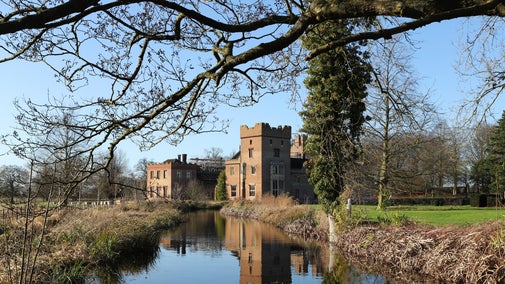
Donate
Everyone needs nature, now more than ever. Donate today and you could help people and nature to thrive at the places we care for.

National Trust specialists work hard to preserve the more than 600-year-old Tintagel Old Post Office. This miniature medieval manor house needs constant care.
Although commonly perceived to be a Victorian building – it was a letter-receiving office in the 1870s – 'The Old Post Office' was first built sometime between 1350-1400 and was the home of a prosperous farmer.
The building was given Grade I listed status in 1952 and remains one of the best examples of Cornish vernacular architecture. It displays many building styles native to North Cornwall that are now in decline.
– Jo McGillivray, Operations Manager
While the doors are closed in the winter, the house and garden team, as well as specialists in historic buildings, work hard to keep the building accessible, safe and in good condition. Outside, work might include masons repointing the traditional lime mortar on the wavy Tudor roof – one of the most important features of the house.
– Rhodri Davies, Collections & House Officer
In 1895, the locals of Tintagel, led by local lady Catherine Johns, managed to safeguard the future of Tintagel Old Post Office by buying it through auction and paying for restoration work on the house by selling artworks of it.
Knowing it would need long-term care, they appealed to the then newly formed National Trust, which agreed to help. The charity has been looking after this piece of Cornish history since it was purchased it in 1903. The National Trust has therefore been repairing the house for more than a century and because of the traditional materials it is made from, this work will need to continue, and we can only do so with your support.
Work inside the house is also important. The house team continues to carry out collection record work. This involves going through all the records to better understand where the items came from, who gifted them and when. This gives us a better understanding on the significance of the items and informs how best to care for them.
Tintagel Old Post Office is an Accredited Museum, and staff work to strict practices when it comes to managing collections, from their acquisition to record keeping and documentation. Like many museums that have been collecting for more than a hundred years, there are a few historic gaps in understanding where certain items came from. The challenge is to undertake a bit of detective work, delve into the archives and fill in the gaps in the history of all the items in our care.
As a not-for-profit organisation, the National Trust relies on funding from memberships, visits, purchases, generous donors and elsewhere. None of this work would be possible if it was not for such continued support.
Thanks to this support, the Tintagel Old Post Office is still standing and the National Trust is able to realise Catherine Johns' dream of preserving the building for future generations.
With your ongoing support, we're able to continue our vital conservation work. Thank you for helping to protect these special places.

Everyone needs nature, now more than ever. Donate today and you could help people and nature to thrive at the places we care for.
A story spanning six centuries, discover how this ancient abode went from being a thatched farm building in the Middle Ages, to a fashionable home in Tudor times before eventually becoming the letter-receiving office for the village in the 1870s.

The Victorian-style cottage garden is a welcome retreat from the busy high-street. Awash with the colour throughout the year, the garden is planted with scented herbs and fragrant flowers that attract a number of insect pollinators and birds.

Enjoy a picnic in the garden among sunny lawns and fragrant flowers, then visit the post-room shop to browse second-hand books and postcards.

We believe that nature, beauty and history are for everyone. That’s why we’re supporting wildlife, protecting historic sites and more. Find out about our work.

Read about our strategy, which focuses on restoring nature, ending unequal access and inspiring more people.
